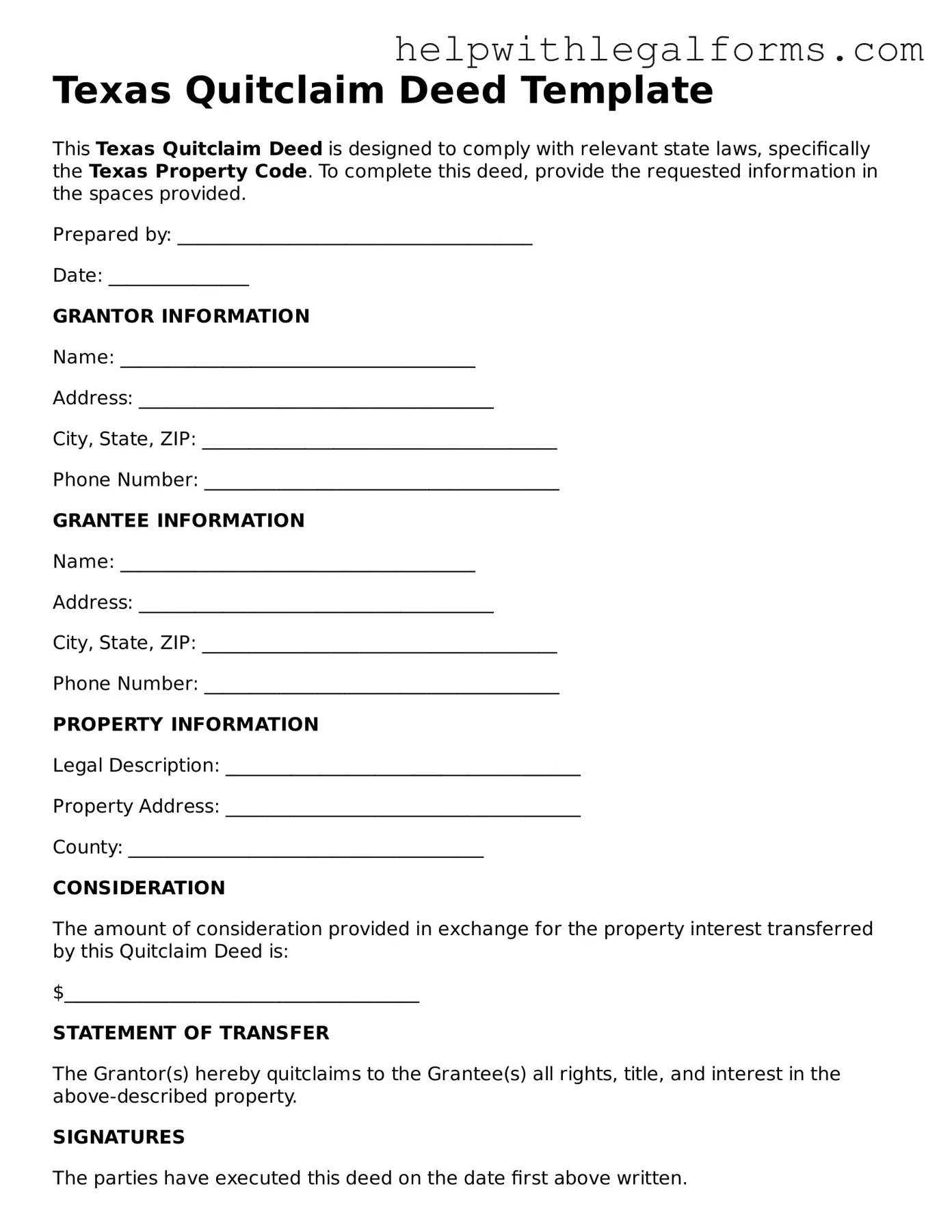Texas Quitclaim Deed Template
This Texas Quitclaim Deed is designed to comply with relevant state laws, specifically the Texas Property Code. To complete this deed, provide the requested information in the spaces provided.
Prepared by: ______________________________________
Date: _______________
GRANTOR INFORMATION
Name: ______________________________________
Address: ______________________________________
City, State, ZIP: ______________________________________
Phone Number: ______________________________________
GRANTEE INFORMATION
Name: ______________________________________
Address: ______________________________________
City, State, ZIP: ______________________________________
Phone Number: ______________________________________
PROPERTY INFORMATION
Legal Description: ______________________________________
Property Address: ______________________________________
County: ______________________________________
CONSIDERATION
The amount of consideration provided in exchange for the property interest transferred by this Quitclaim Deed is:
$______________________________________
STATEMENT OF TRANSFER
The Grantor(s) hereby quitclaims to the Grantee(s) all rights, title, and interest in the above-described property.
SIGNATURES
The parties have executed this deed on the date first above written.
Grantor Signature: ______________________________________
Date: _______________
Grantee Signature: ______________________________________
Date: _______________
TAX STATEMENTS
The party responsible for payment of any documentary transfer taxes is:
- Grantor
- Grantee
- Other: ______________________________________
The party responsible for property taxes due and payable for the current year is:
- Grantor
- Grantee
- Other: ______________________________________
This document is not valid until it is filed with the county clerk's office in the county where the property is located.
NOTARY ACKNOWLEDGMENT
State of Texas
County of ___________________
On this day, before me, ______________________________ (name of notary), a notary public, personally appeared _________________________________, known to me (or satisfactorily proven) to be the person(s) whose name(s) is/are subscribed to the within instrument and acknowledged that he/she/they executed the same for the purposes therein contained.
In witness whereof, I hereunto set my hand and official seal.
Notary Signature: _____________________________
Date: _______________
My Commission Expires: _______________
